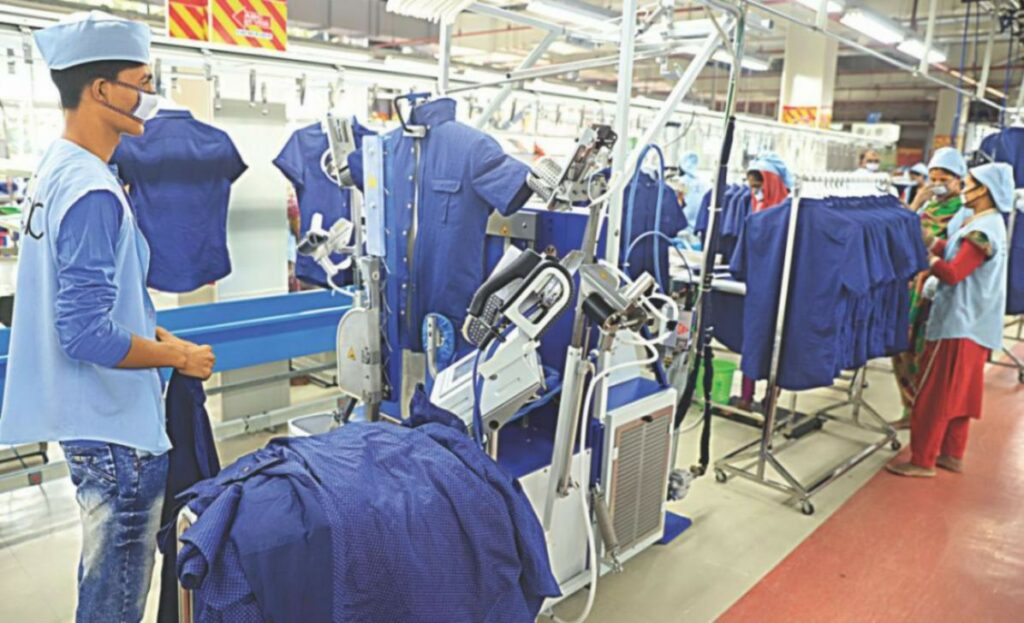Evolution of the RMG sector
Why research, data and benchmarking are crucial for its growth
The global apparel industry is awash with “facts” and statistics which, in a great many cases, can be inadvertently misleading. One of the most cited of these is that the textile industry is the second most polluting on the planet. Says who? Well, quite a lot of people actually.
And yet, do we know that this is definitely the case? Is there concrete data to support such a proposition? No one seems to know where this data came from or how it was calculated.
Keep hold of this thought when considering Bangladesh’s ready-made garment (RMG) industry. A lot is said about this sector: we are told that it lacks efficiency, we are told there is a lack of investment in research and development, we are told productivity rates are low. It may well be that the above points are true—certainly, anecdotal evidence would support such claims and we would all agree that things can be better. But can we be sure?
The problem is, we don’t have enough data on the specifics. The old saying “you can’t manage what you can’t measure” was never so true as in Bangladesh’s RMG industry. For example, it is often quoted that the industry operates at 40 percent efficiency. Where does this figure come from and how did it become common currency in the industry? Again, we simply don’t know, and yet we seem to take it as validated data.
If this figure is 100 percent verified, we all know what we have to do. We have to invest in better technology, better training and better research and development. Why? Because efficiency levels this poor would provide a clear and unambiguous business case for working towards efficiency improvements. And that’s what we are talking about here: making clear business cases using confirmed, substantiated evidence.
Metrics and specifics matter. We need the ability to measure better. With proper funded research to provide an accurate measurement of productivity and efficiency in the RMG sector of Bangladesh, implementation of baselines will provide yardsticks for future measurements leading to dynamic, productive, actionable benchmarks. With improved data collection processes, we stand to create paths of certainty, productivity and excellence. If data identifies weaknesses, we then know we have to make changes and try a different approach. There would be no more guessing.
A business can only make major financial spending decisions with a proven business case, and Bangladesh’s RMG sector can be no different. Major decisions impacting the future of this industry must be built on the foundations of comprehensive research and proven facts. Such an approach also serves to ensure a sustainable future for Bangladesh’s RMG industry.
It would be easy to become negative on this issue, but let’s look at it like this: Bangladesh’s RMG sector has achieved remarkable success to date without the aid of a structured, coherent approach to data and statistical insight. Imagine what we could achieve if we put those ingredients in place. This is actually a huge opportunity.
The RMG industry is so valuable to the GDP of this country that it demands its own sustainable research centre to centralise data—creating a tool for success. The sustainable research centre would serve to act as the market research arm supporting the RMG sector’s global business practices.
What would such a research centre look like? We often talk as a country about learning lessons from China, a country whose textile industry is several years ahead of ours in terms of its development.
Research and data are two areas we can certainly work on. The China Textile Information Centre (CTIC) is a state-owned research institution in the Chinese textile industry and is managed by the China National Textile and Apparel Council (CNTAC). CTIC produces a wealth of research and statistics and employs hundreds of people. The blueprint is there, and there is no reason why Bangladesh, the world’s second largest exporter of apparel after China, should not have something similar.
We should also not forget that we are making progress in some areas of data collection and analysis. For instance, recent times have seen a team of researchers mapping every single garment factory in Bangladesh as part of an initiative by the C&A Foundation and BRAC University (BRACU). This is true radical transparency, the likes of which must be underpinned by painstaking research. Bangladesh is leading the way here.
But we can and must do more in the research field, and I believe we will.
Good, thorough research is costly—we all know that. But it’s also a crucial piece of the puzzle. Moreover, proper research which uncovers key market insights will pay for itself multiple times over. Spending in this area will prove to be the smartest investment Bangladesh’s RMG sector makes in the coming years.
Mostafiz Uddin is the Managing Director of Denim Expert Limited. He is also the Founder and CEO of Bangladesh Denim Expo and Bangladesh Apparel Exchange (BAE). He can be reached at mostafiz@denimexpert.com
Source: The Daily Star.

